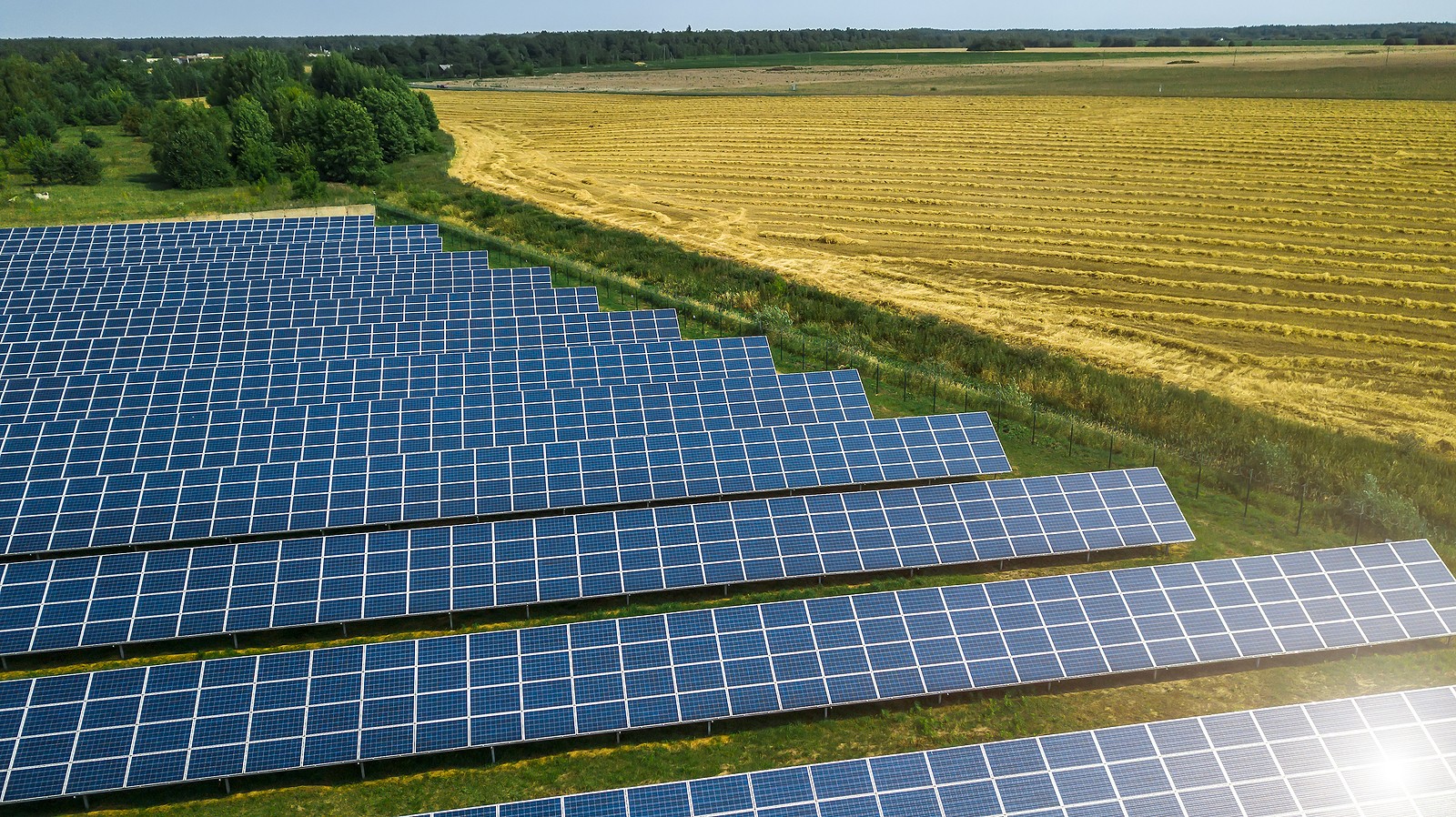
One of the fastest growing commercial solar energy solutions in California is agricultural-based solar installations, or large solar systems installed on farmland, either on unused lots or directly over crops. Farmland tends to be well-positioned to generate a significant amount of electricity via a solar farm, making this an option for farmers looking to increase revenue sources. Let’s take a closer look at the costs of setting up a solar farm like this, and what ROI can be expected from such a project.
Agricultural Solar Energy Installation Costs
Installation costs are generally broken down on cost-per-watt, so that costs can be carefully aligned to expected solar output. Costs can range drastically based on location and size, so a custom analysis of your business and situation is necessary to determine your specific cost and savings impact.
Note that a ground-based solar installation, like agriculture solar panel systems, is significantly more affordable than roof-based systems, which costs significantly rise in comparison. However, it’s also important to consider some ongoing maintenance tasks, as solar farms will need a few visits a year from an experienced solar management company to help maintain and clean the panels.
Expected ROI and Factors to Consider
Once up and producing reliable energy, agricultural solar panel systems can be used to sell electricity and produce revenue. The return depends on a variety of factors, including:
- How much energy the agricultural owner wants to sell vs. how much they plan to use
- Current trading levels for solar power, which can fluctuate based on time and region
- Energy production for a specific solar installation, which vary based on peak sunlight hours, local geography, etc.
That considered, let’s say that a farm adopts a one-megawatt solar system, and that solar energy is trading at around $27 per MWh (megawatt-hour). If the solar farm makes 1,460 MWh in a year – which should not be a problem at all in California – and selling all energy produced, then it is bringing in nearly $40,000 annually.
Additional California Solar Incentives and the SREC Market
When studying initial costs, it’s also important to consider any tax incentives that can offset these early costs, both at the state and federal level. Currently, the best option in California is the Federal Solar Investment Tax Credit (ITC), which offers a 26% federal tax credit that can be claimed when a commercial project begins construction, significant savings for farms that pay an appreciable amount in taxes. However, note that the ITC credit is being swiftly phased out in the next few years (according to the current timeline), so acting quickly is important for taking advantage of this incentive.
We should also mention the SREC (Solar Renewable Energy Credits) market. Generating solar power in California also generates independent SRECs, which can be traded on an open market. Utilities and other various commercial companies buy these SRECs to help offset their own energy liabilities and meet sustainability goals. Currently, bids for SRECs are anywhere between $165 and $197 in California, although bid amounts do fluctuate with demand. This is another option to increase overall revenue gained from a solar installation – and Coldwell Solar, as an experienced solar energy company in California, can help you manage these incentives and credits to improve overall ROI.
Trade-Offs for Solar Installations
Farmers may also have questions about trade-offs for a solar installation, especially on current crops or feeding land. Here are several important points to keep in mind:
- Crops still yield underneath solar panels if this is a concern. Tough foraging plants like grasses do well, and when properly spaced solar panels allow for the growth of peppers, tomatoes, beans, and more, with very little difference in yield.
- When solar panels are position high enough (at least seven feet above ground is recommended), then livestock can graze beneath them without causing problems (and in some cases may benefit from shaded areas).
- You cannot use tractors or heavy harvesting equipment near solar panels, but if this is a concern, then panels can be installed at the margins of fields or on degraded lots.
Offsetting Energy Costs for Specific Agricultural Tasks
Another common question about solar farms is just how the solar energy can be used – specifically, can it be used to power some agricultural processes to save even more money. In many cases, this is a possibility, especially when it comes to powering irrigation and similar tasks. This represents another potential source of savings that will further enhance ROI, and if you are interested in utilizing solar power like this, it’s important to bring it up in the planning stages of the project with your solar company in California.
Additional Effects and Benefits of Co-Location
There are a variety of other factors to consider when co-locating solar panels with crops, which lead to potential costs or better ROI depending on the details. For example, solar panels can help blocked wind and prevent erosion, which prevents problems from developing in the future and may potentially replace the costs of other erosion prevention methods.
Additionally, nearby harvesting and wind can also cover solar panels and may affect energy generation, which is one reason that the solar installation needs a proper maintenance schedule. However, impact from dust is typically minor, and is further reducing if crops are grown alongside the solar panels. You can find more information here.
Finding Accurate Numbers for Your Specific Plans
If you are interested in agricultural solar energy in California, arrange for a consultation with Coldwell Solar for more information. We can discuss what sort of solar project you have in mind, what financing and cost structures could work for you, and other key details of the planning process.

